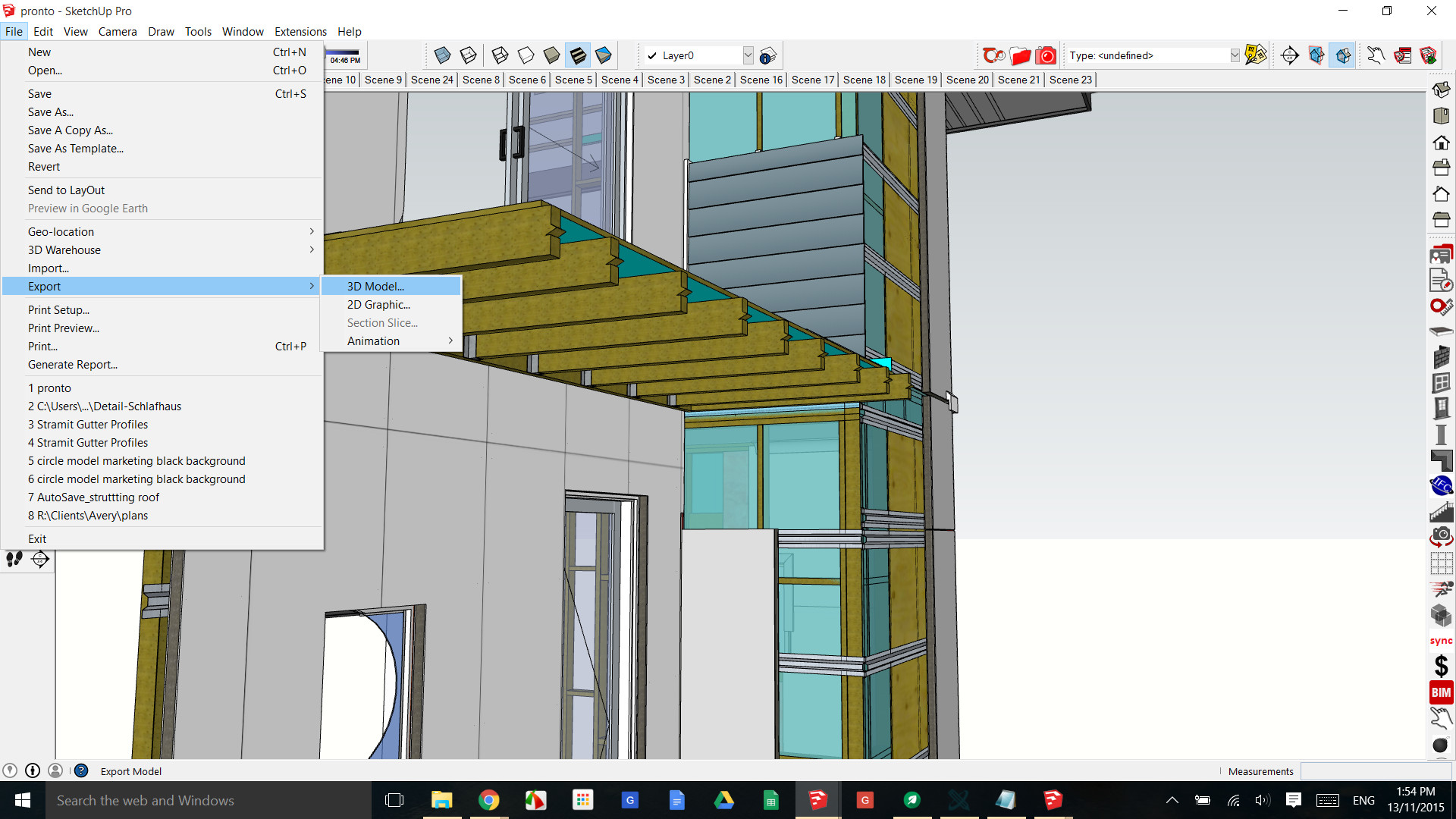

Just make sure you DON’T hide our reference lines And there you have it, the Doors are ready to be exported I will repeat this process for another category. You can easily hide these by right-clicking the line, go to hide – category or elements.

Remember that we have the Line’s category on? That’s what these are They’re just other lines I’ve drawn in my model, most of them are room separation lines or model line that I’ve created.

In this case, these are 3D or 2D models that I’ve imported, which I can turn off by going to the imported categories tab and uncheck them all. You can see that there are other things in the model that are not doors, what are these? This will help us align the different parts of the model later in Sketchup after importing Now let’s duplicate this view Rename it to the category that you want to export In this case I want to export the doors, so I renamed it to SKP (for sketchup) dash, doors Now we can use Visibility Graphics to hide all the other categories except doors And remember to keep the line’s category visible because that is what make up our reference point. Let’s go back to the other view and get started, The first thing to do here is we are going to use Model Lines and draw a reference point. Best way to Export a Revit model to Sketchup Here, I have created an isolated view that only show the building because as you can see my whole model is HUGE. You could use TIG' global material changer to change imported materials to your own favorite ones but you would lose the material names and not be able to update the model Maybe a custom version of that script could be made that kept the original material name and just swapped all the other material settings and texture? Including renderer specific attribute settings like Thea or Vray.Best way to Export a Revit model to Sketchup – Today I’m gonna show how to export a Revit model to DWG and then import it into Sketchup Let’s get started First open your model in 3D view. The workflow above does that better than any other existing method I know of.īut I'd gladly be proven wrong if there exists a better way.Įdit. To be able to easily update to a newer version of the Revit model and keep materials (with textures) that I have made inside SketchUp. To get the Revit model into SketchUp in a editable way with different materials for Window frames and glass and other such geometry that takes ages to fix manually.ī. The architects at my office seldom put materials and textures on models in Revit so for me the main problems have been:Ī. If you don't need to edit inside SketchUp you could try the FBX route to keep textures. Only that it was my best workflow so far. I never said it was the "ultimate Revit to SketchUp workflow".


 0 kommentar(er)
0 kommentar(er)
